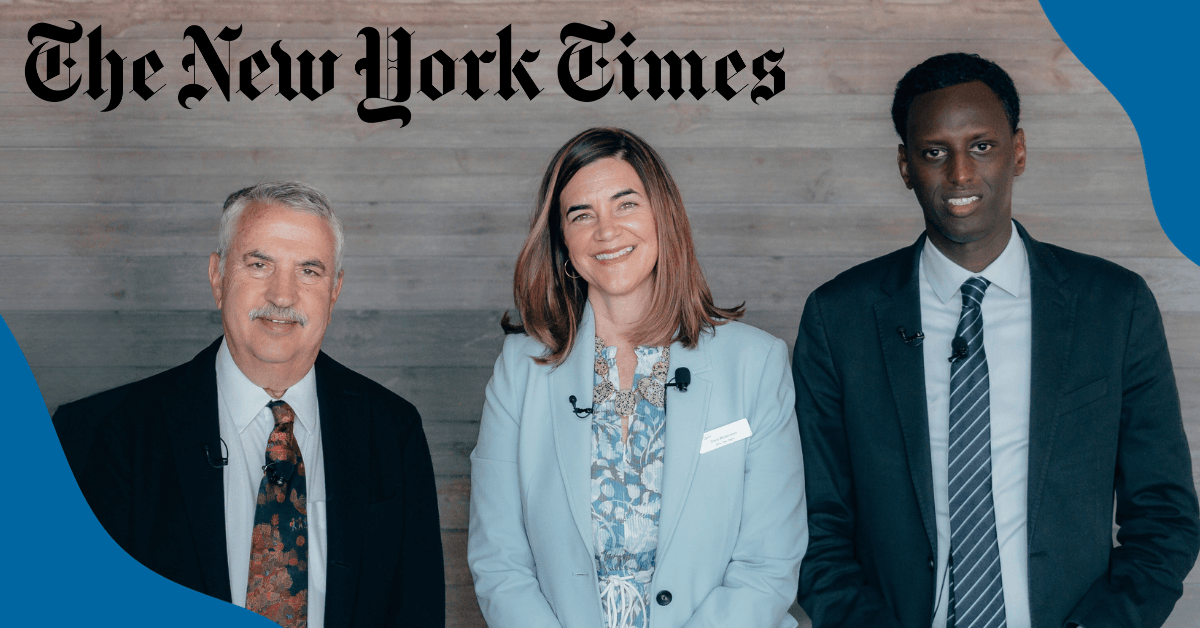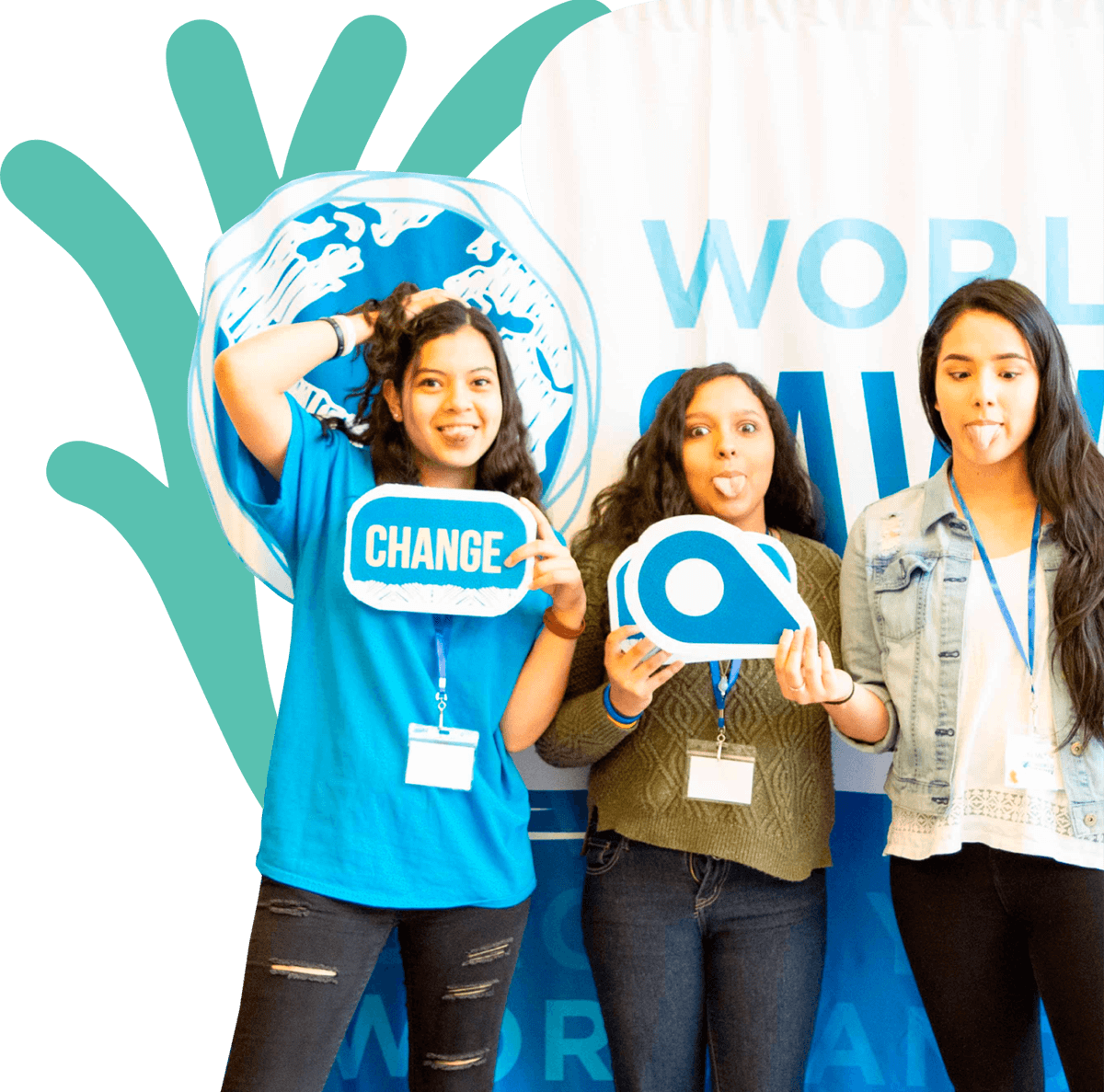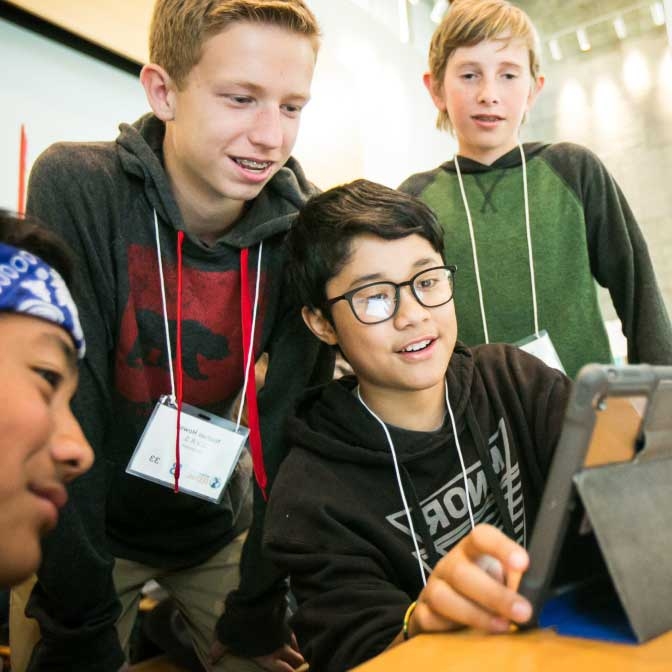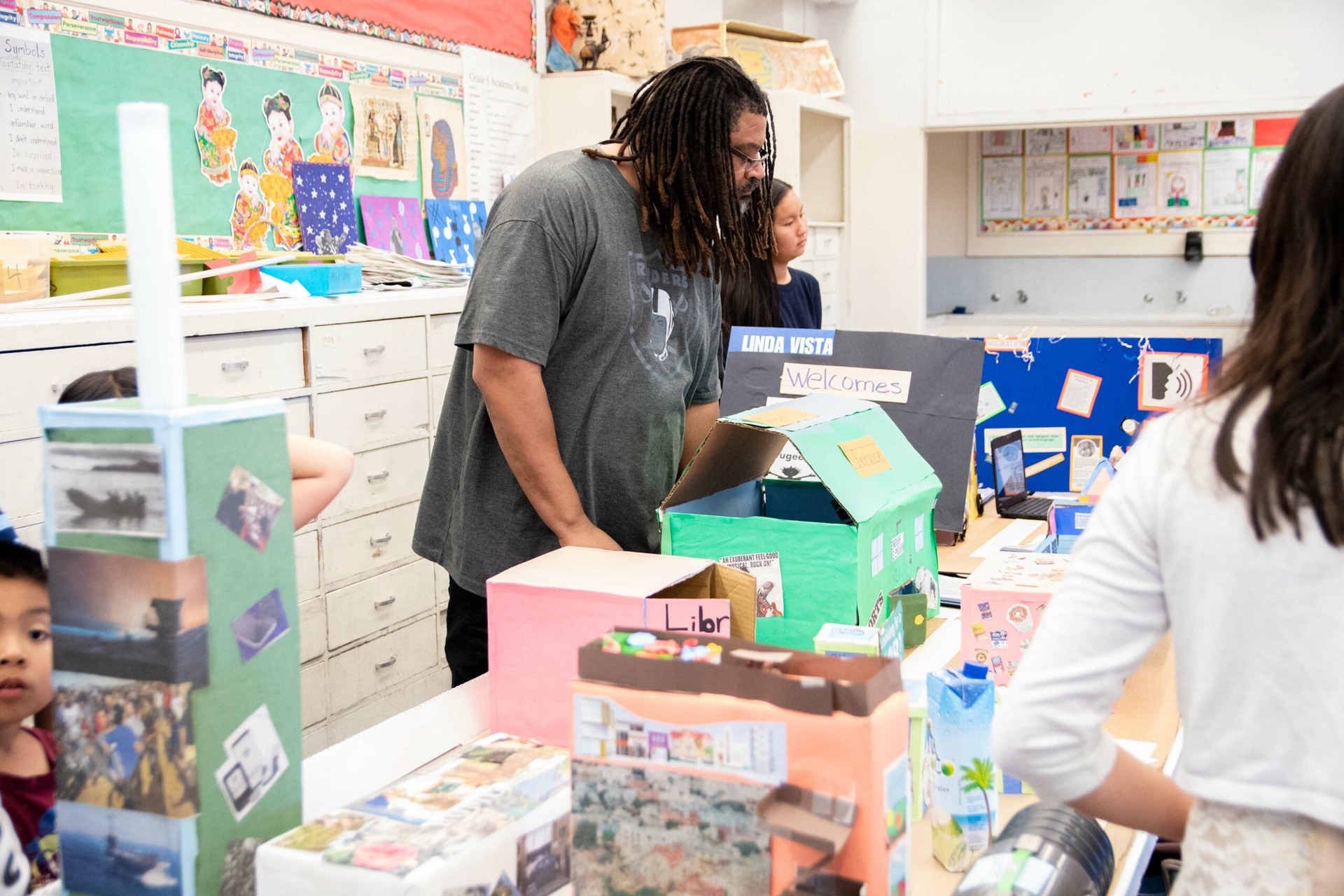
By Dana Mortenson
Whole-school partnerships are at the heart of World Savvy’s work. Since our founding in 2002, we’ve worked with schools across the country to build inclusive, adaptive, future-ready learning environments.
Our World Savvy Partnerships program supports whole schools and districts to integrate global competence throughout leadership, teaching, and learning. This holistic approach allows us to reach the greatest number of students while creating deep, meaningful, and lasting shifts in K-12 education.
But what does that look like in practice?
This summer, we wrapped up nearly three years of partnership with Middle STEAM Magnet, a STEAM (science, technology, engineering, arts, and math) school, located in the Linda Vista neighborhood of San Diego, California.
Montgomery Middle is part of the San Diego Unified School District, the second largest school district in California, and their students are ethnically and religiously diverse, representing more than 15 ethnic groups and more than 60 languages and dialects. At Montgomery Middle, 35% of students are English Learners, 18% of students have an Individualized Education Plan, and as a provision 2 school, all students receive free breakfast and lunch.
The 3-year World Savvy–Montgomery Middle partnership focused on interdisciplinary thinking, building student agency through community research and public presentation, and design thinking in a STEAM environment.
We kicked off year 1 of the partnership by engaging 20 teachers in a day-long workshop. Teachers broadened their understanding of global competence, further explored how to apply STEAM to student learning, and practiced developing a project-based learning unit around the case study of food deserts.
Following the workshop, teachers received active coaching from World Savvy throughout the school year to design and implement two major inquiry-based units that include action projects for their students. We also partnered with Montgomery Middle to plan a design thinking STEAM camp for rising 5th graders.
In our second year of partnership, teachers built on their understanding of design thinking to support students as they developed Knowledge to Action projects.
Students learned about the Sustainable Development Goals and worked through World Savvy’s Knowledge to Action process to develop solutions to global and local issues.
One group of 7th graders was concerned about access to healthy food in their community. In order to provide consistent access to organic produce, they found a food truck that wasn’t being used two days a week, partnered with the owners and local farmers, and created a business plan to sell produce out of the truck.
Another group of students built a sculpture shaped like a wave made up of plastics and trash that they gathered from their neighborhood, saying –
“We wanted to raise awareness about how trash affects marine life and that they’re dying because of it.”
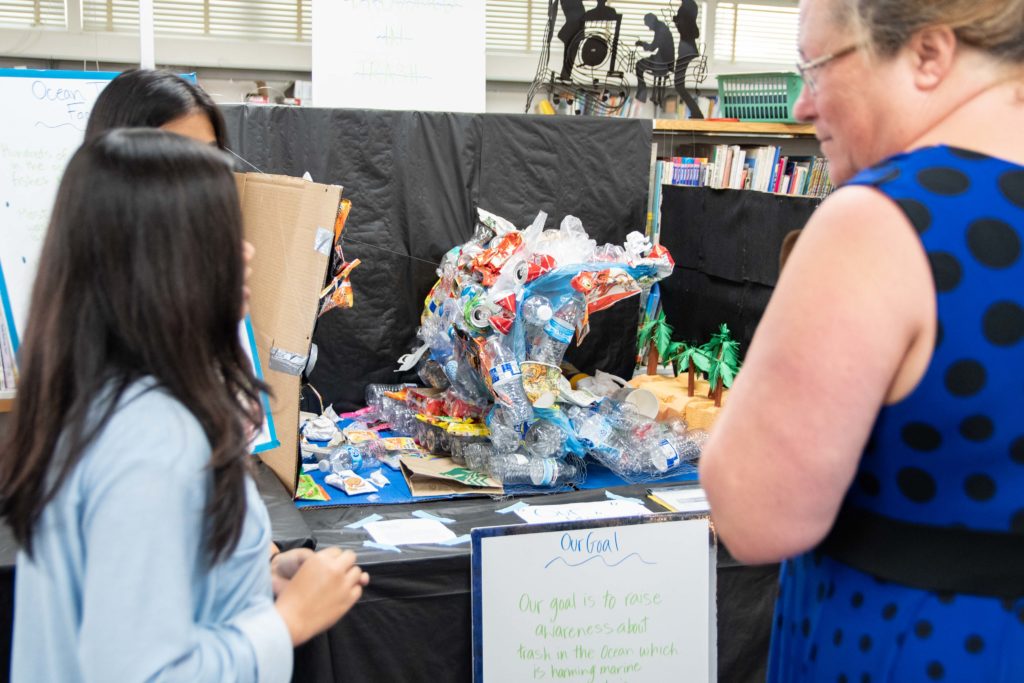
The second year also included support for Montgomery Middle to create a vision for their school that established a shared purpose and a common language for all community members and will help guide their work in the future.
In year 3, World Savvy worked with teachers to organize a fall exhibition and spring showcase of student work. World Savvy encouraged teachers to reflect and adapt and model those practices with their students. Training also included a focus on equity-based classroom practices.
At the end of the third year, students hosted their bi-annual Exhibition of Student Learning. In their Knowledge to Action projects, sixth graders focused on the history and future of the San Diego River. Seventh graders asked how they can be changemakers in their community and designed solutions to local and global challenges. Eighth graders focused on finding their voice. Students wrote poetry to increase awareness on topics connected to the Sustainable Development Goals and designed games highlighting the choices that people need to make in order to survive.
We’re invested in the whole school model of partnership because we know that it maximizes our impact on school culture and student learning.
Teachers at Montgomery noted that their ability to implement a project-based unit greatly increased as a result of working with World Savvy. For many teachers, their ability to help students apply design thinking also grew substantially and they felt more supported in their efforts to build an interdisciplinary STEAM curriculum.
When asked what she took away from the experience of working with World Savvy Jewels Krueger-Selle, a Montgomery science teacher, said, “so many things that I didn’t know before — this whole design thinking process. I always say I’m a scientist before I’m a teacher. I’m an environmentalist. I know there are problems. How do you take these things and inform the kids, but instead of being up in front at the board and saying, ‘This is what’s happening; write these notes down,’ actually bringing this idea of ‘How can we solve things?’ And letting the kids come up with ideas of their own instead of preaching ‘This is what we should do.’
These kids are our next world leaders. They have to figure this out themselves. So knowing now not to be that kind of teacher that I was when I first started ten years ago, when it was mostly me teaching and talking. Now it’s more about guiding the students.”
This is just one story of a World Savvy partner school, and we know that every school is unique. That’s why every World Savvy school partnership is custom built in collaboration with the school in response to their specific needs. Are you interested in becoming a school partner? Get in touch to start the conversation.
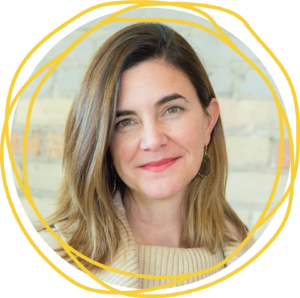
Dana Mortenson is the Co-Founder and CEO of World Savvy. Dana is an Ashoka Fellow, was named one of The New Leaders Council’s 40 under 40 Progressive American Leaders, and was winner of the Tides Foundation’s Jane Bagley Lehman award for excellence in public advocacy in 2014. She is a frequent speaker on global education and social entrepreneurship at high profile convenings nationally and internationally, and World Savvy’s work has been featured on PBS, the The New York Times, Edutopia and a range of local and national media outlets covering education and innovation.






